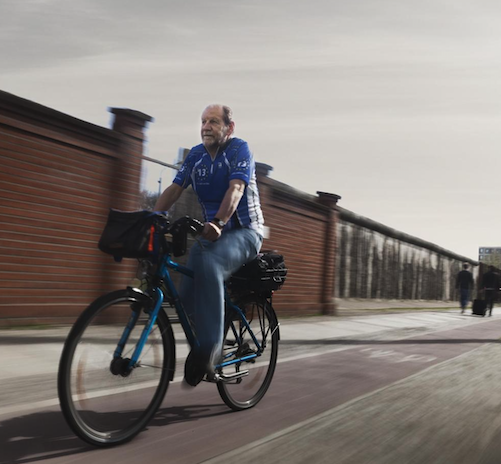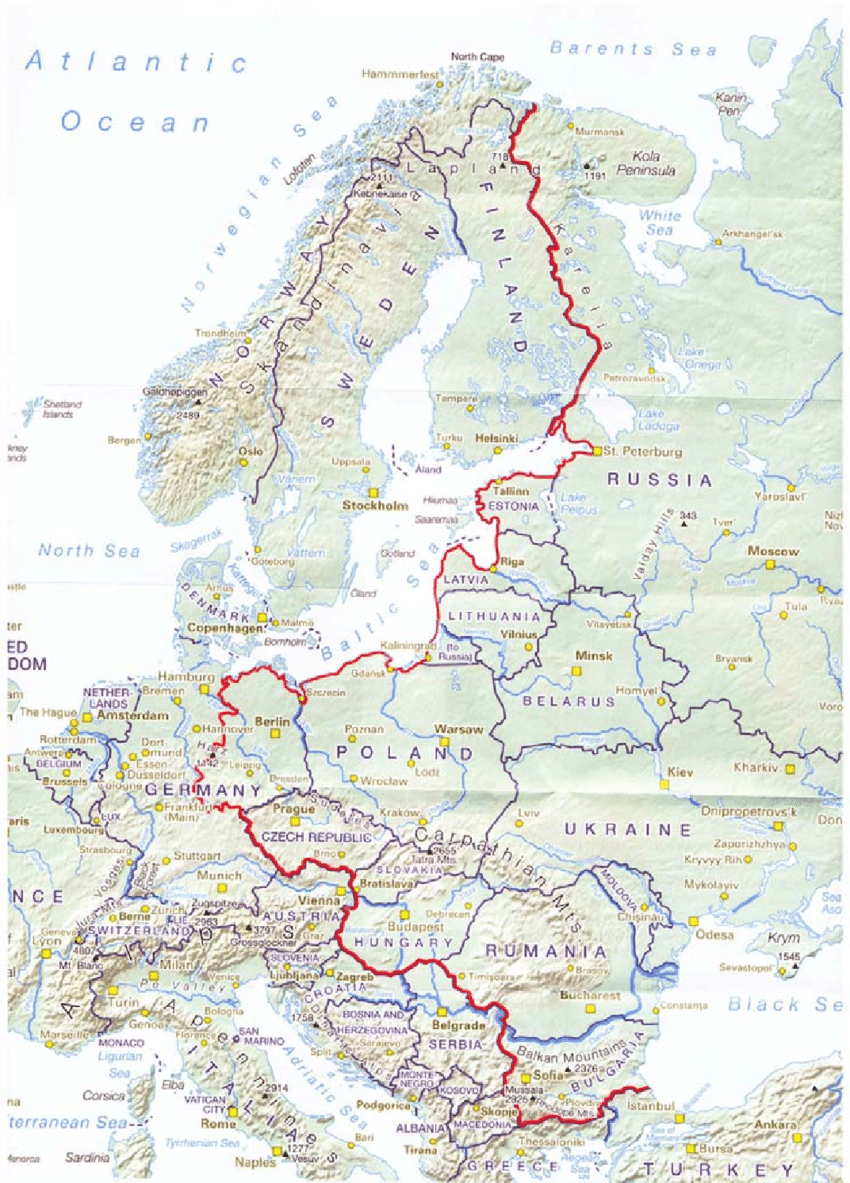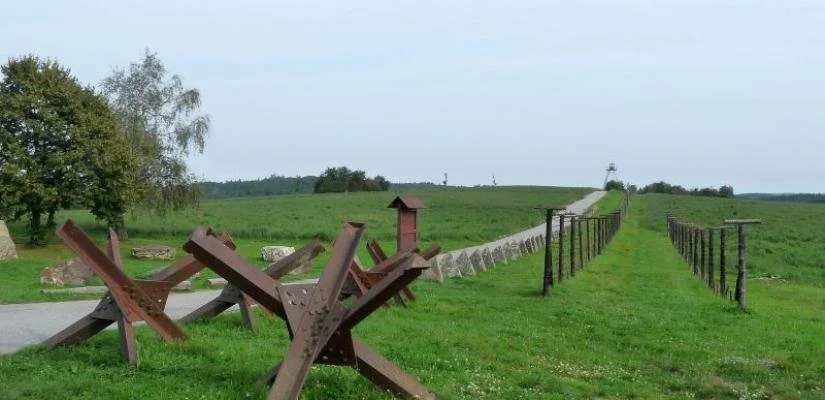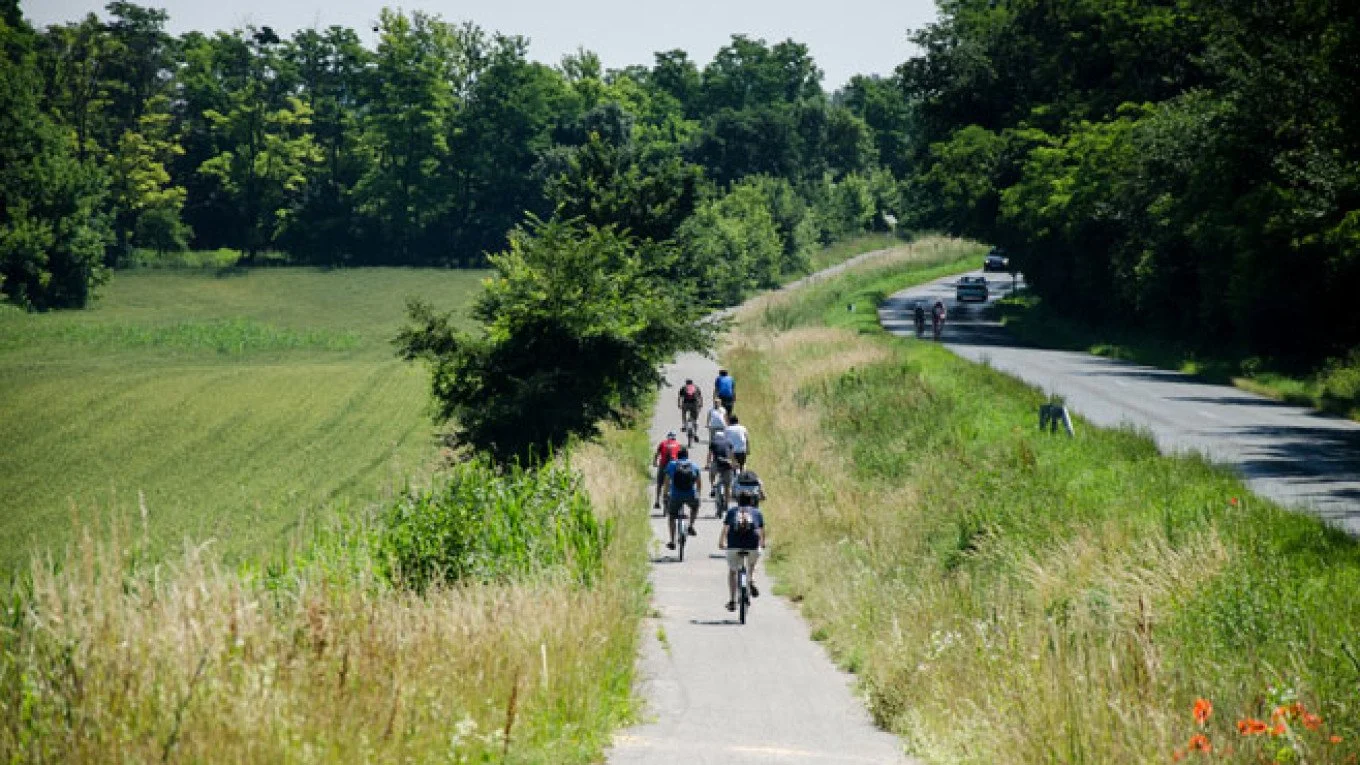Cycling the Cold War’s Cutting Edge
SLAVONICE, CZECH REPUBLIC — AUGUST 2022 — We’d seen the medieval town square, the Renaissance church, the lovely etched facades of centuries old homes. Now, because this tiny town sits on the border between Austria and the former Czechoslovakia, we wanted to see the curtain. The Iron Curtain, that is, or what was left of it.
To anyone who grew up during the Cold War, the Iron Curtain was a scar slashing through all hope. Stretching, as Winston Churchill noted, “from Stettin in the Baltic to Trieste in the Atlantic,” the curtain was more than just a chilling metaphor. Laced with barbed wire, heavily mined, patrolled by savage dogs and sullen soldiers, the Iron Curtain pitted East against West along the deadliest turf in the world. Including the Berlin Wall, this divide claimed 160 lives of those trying to cross it.
As 1970s détente escalated into 1980s threats of “nuclear winter,” the Iron Curtain seemed as permanent as the hills and rivers it divided. And then one November night in 1989. . .
We wanted to see the Iron Curtain. Decades beyond the Cold War’s end, we wanted to bear witness to the barbarity. So we walked from the charming Czech town, a mile or two along a hiking path, to the border. What would we see? Stray shards of barbed wire? A stony watchtower, perhaps? Some rust? The last thing we expected to see was what we saw — a bike trail.
The Iron Curtain Bike Trail began with a dream and a ride. In 1990, just months after the Berlin Wall fell, German Green Party member Michael Cramer cycled 100 miles along the remnants of “The Wall” as it circled Berlin. Barbed wire and brick lay strewn along his path. Soon it would all be swept away, Cramer feared. Generations would die out. People would forget. Back in Berlin’s House of Representatives, Cramer began lobbying for preserving the past with a Berlin Wall Trail.
But memories and resentment die hard. Even in re-united Germany, the wall remained a flashpoint. It took Cramer ten years to gather enough support, but in the summer of 2001, the Berlin Wall Trail opened, 100 miles around the city for biking, strolling, even kayaking along a nearby river.
Four years later, Cramer, by then in the EU Parliament, had a larger dream. Nature had already enshrined the Iron Curtain. Because it had been “no man’s land” for decades, a natural greenbelt had grown the length of the divide, hosting lush forests, bird sanctuarites, and formerly endangered species.
Working with conservation groups, the EU established the European Green Belt, a 7,737 mile strip of pristine land where death had once lurked. Cramer soon put the idea on wheels. Why not Europe’s longest bike trail?
When the EU signed on, twenty countries began clearing debris, paving, putting up signs. By 2009, some 3,000 miles of trail were opened through central Europe. Four years later, the bulk of the trail was done. And today, any energetic cyclist can pedal unimpeded from the northern border of Finland, along the Baltic Sea, south along the erasure dividing East and West Germany, on through Central Europe, over the mountains of Bulgaria into Greece, and finally, 6,150 miles later, pull up at trail’s end on the shore of the Black Sea in Turkey.
Along its continent-spanning path, the trail also known as EuroVelo 13 traverses dairy farms, corn fields, vineyards, meadows, castles, and three major capital cities. It also rides through history.
In central Germany, two watchtowers still stand on opposite sides of the old divide. Here in what was called the Fulda Gap, East German troops stared down American troops. Mines lined the trail. Step on one and metal spikes shot thirty yards in all directions. Elsewhere along the trail is a cross to remember the spot where, in 1975, an East German teen tried to cross to freedom and was blown apart by anti-personnel mine.
Today, with soldiers gone and mines removed, the nightmare is preserved in small town museums and in a former American military camp whose barracks, mess hall, and barbecue have been left in tact. And for bikers who double as history buffs, the Iron Curtain Trail is lined with signs noting milestones along the route.
Nothing can capture the tensions of those times. “We grew up with soldiers everywhere, with no visitors allowed from outside,” said Stefan Herrlich, who now runs an inn near the trail’s former Point Alpha in Germany. “We all thought it was completely normal.”
Today, normal is the steady march of bikers in uniform — helmets and Spandex — rolling down another small section of this historic symbol of human conflict. No one has yet ridden the entire trail. Perhaps someone is en route even now. Yet as we turned back towards charming Slavonice, we wondered.
Fifty years on, might some other international flashpoint be paved over, along with the tensions that created it? Seems impossible, but then, so did this. . .
Summing up the startling change, an EU video noted: “Everyone who rides along the Iron Curtain Trail, happily cycling back and forth between countries, is also part of a happy ending, the one which is so central to our own history.”










